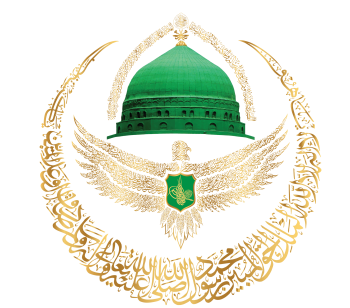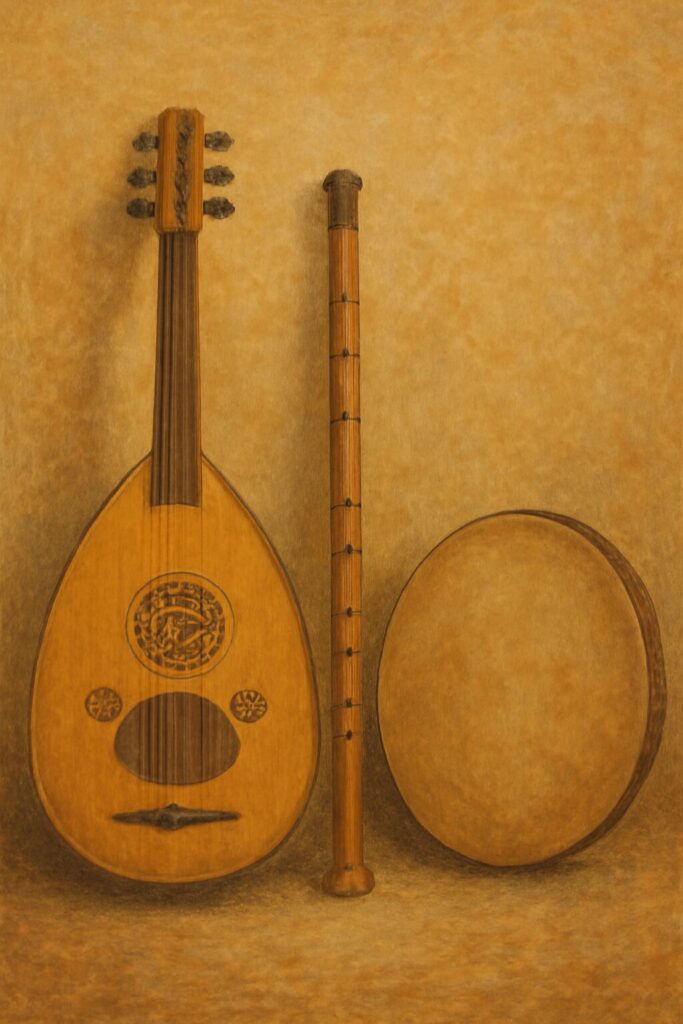Music in Religious Rituals
Musical melodies are clearly present in many religious rituals in the Islamic world. These rituals include the call to prayer (Adhan), Quranic recitation, praise (Tamjid), welcoming and bidding farewell to the month of Ramadan, Eid prayer Takbeers, and various Dhikr ceremonies. Songs related to the Prophet’s birthday (Mawlid) and other devotional recitations are also performed during religious occasions, as well as social events such as returning from Hajj, moving into a new home, or fulfilling vows. These religious celebrations continue to connect the spiritual and worldly spheres for both Muslims and non-Muslims.
Sufism and Music in Baghdad
Sufism is particularly linked to the city of Baghdad, which witnessed the rise of Islamic Sufism in the 6th century AH. Baghdad was a city of both knowledge and Sufism, and Sufism interacted with the local atmosphere, allowing the emergence of Sufi singing that reflected the interplay between spirituality and art during that era. This type of music flourished in Baghdad, producing a large number of poets, singers, and musicians.
The Call to Prayer (Adhan) and Musical Modes
The Adhan, one of the most important Islamic rituals, is often accompanied by Iraqi maqam melodies such as Hijaz, Kurd, and Ajam. Muezzins in Baghdad pay attention to choosing the appropriate melody, avoiding sad tones and preferring more joyful ones. Some worshippers request specific melodies before the Adhan is called.
Quranic Recitation and Iraqi Maqams
Tajweed is the art of reciting the Quran beautifully and expressively. In Baghdad, Quranic recitation is performed using many Iraqi maqam melodies, comprising over thirty different tones. Each recitation has its unique style suited to the maqam, such as Maghrebi or Egyptian styles, but the Iraqi recitation is known for its melodic diversity.
Eid Takbeers and Praise (Tamjid)
Eid Takbeers, recited on the mornings of Eid al-Fitr and Eid al-Adha, are often sung in the Jaharkah maqam, while mosque praise (Tamjid) is accompanied by maqams such as Arwah, Mukhalif, Mahmoudi, and Ajam Ashiran. Tamjid concludes with the Saba maqam, and Baghdad’s senior singers are selected to perform these melodies in major mosques.
Welcoming and Farewell of Ramadan
Ramadan is welcomed in Baghdad a few days before its arrival with melodic poems recited from mosque minarets, usually using the Hakimi maqam. The farewell of Ramadan during the last days of the month is accompanied by melancholic melodies, such as the Sufyan maqam, reflecting feelings of farewell and contemplation on the blessings of the holy month.
Prophetic Celebrations and Dhikr Ceremonies
Prophetic celebrations are major religious events, such as Laylat al-Qadr and Mawlid, which involve many musical maqams. These ceremonies feature groups of male performers who commemorate the occasion with beautiful Iraqi melodies and maqams.
Musical Instruments Used in Sufism
In Sufism, dervishes use a variety of musical instruments, including percussion, wind, and string instruments. Some Sufi groups focus solely on percussion instruments like the daf, symbolizing the infinite motion of the universe and used in unity and spiritual music. Other instruments, such as the naqareh, are used in Dhikr ceremonies, following the traditions of different Sufi orders such as Qadiriyya and Rifa’iyya.
Conclusion
Music in religious rituals and Sufism is not merely entertainment or a hobby; it is a means of achieving spirituality and enhancing faith. Through melodies and maqams, souls express their submission to God, celebrating worship and traditions that elevate individuals to higher levels of spiritual and religious understanding.

